Are you captivated by Studio Ghibli’s iconic films like “Spirited Away” and “Howl’s Moving Castle”? Delve into their spellbinding environmental artistry and explore the profound messages of nature and humanity. Led by visionary Miyazaki, these cinematic treasures blend intricate narratives with themes of ecological consciousness, resonating with audiences worldwide.
Miyazaki’s subtle yet profound approach to addressing environmental issues shines through the innocence and wonder of children characters. In today’s era of heightened environmental concerns, Studio Ghibli’s films serve as beacons of hope and enlightenment, reminding us of our interconnectedness with nature and the urgent need for conservation.
Join us on a journey through Ghibli’s enchanting films, where we delve into the profound environmental messages embedded within. From whimsical forests to sprawling landscapes, experience the timeless wisdom of Studio Ghibli’s environmental artistry that not only entertains but also inspires action and reflection.
Explore Studio Ghibli inspired art and immerse yourself in the magical world of Miyazaki movies. Embrace the call to preserve our natural world and discover the transformative power of Ghibli-style art in fostering ecological awareness.
Miyazaki and his Ecological Storytelling

Hayao Miyazaki, renowned for his captivating Studio Ghibli films, seamlessly weaves ecological themes into his narratives. As a pioneer of Studio Ghibli inspired art, Miyazaki’s movies resonate with audiences worldwide, fostering a profound appreciation for the environment. From enchanting landscapes to complex characters, Studio Ghibli’s signature style captivates viewers of all backgrounds. While Miyazaki movies entertain casual viewers, they also offer a rich tapestry of meanings that deeply engage die-hard Ghibli fans.
Diving into the intricacies of characters and settings, aficionados of Studio Ghibli’s environmental art reveal intricate layers of ecological narratives woven into every frame. With a diverse studio Ghibli film list to explore, Miyazaki’s legacy continues to inspire artists and audiences alike. Discover the magic of Studio Ghibli films and immerse yourself in the beauty of Miyazaki’s ecological storytelling.

Experience the enchantment of Studio Ghibli’s inspired artistry with “Nausicaä of the Valley of the Wind” (1984). Set in a post-apocalyptic world, this Miyazaki masterpiece transports audiences to a future Earth scarred by war and ecological ruin. Immerse yourself in the breathtaking landscapes and captivating narrative as Princess Nausicaä navigates the perilous Toxic Jungle, forming a profound bond with its colossal insects.
This Ghibli-style film delivers a poignant environmental message, showcasing humanity’s resilience amidst environmental devastation. Explore the Studio Ghibli film list and indulge in the studio’s renowned blend of art and storytelling. Join Nausicaä and her fellow inhabitants of the Valley of the Wind as they strive to heal the rift between humanity and nature. Dive into the timeless beauty of Studio Ghibli’s environmental artistry and Miyazaki’s visionary storytelling with “Nausicaä of the Valley of the Wind.
The Story
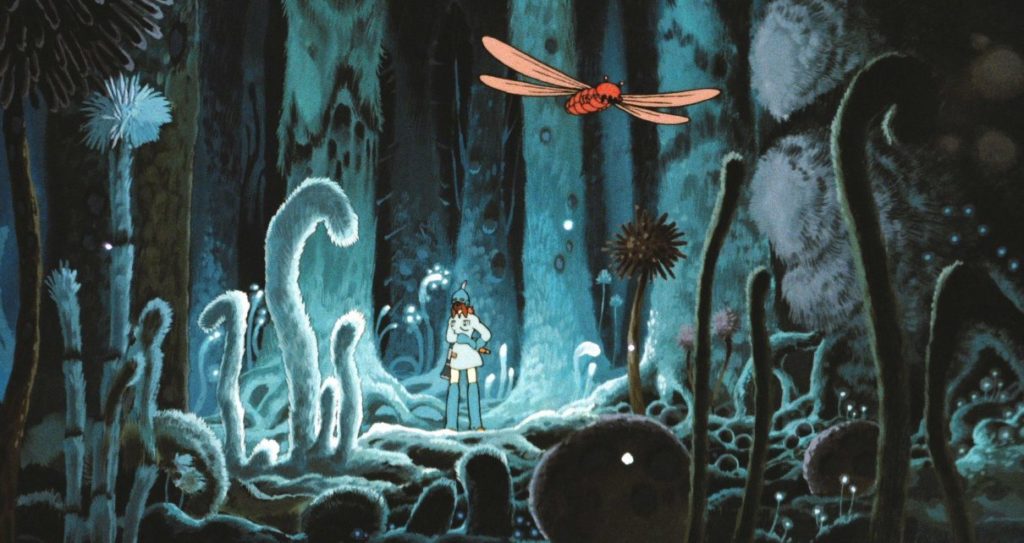
The enchanting tale inspired by Studio Ghibli’s signature artistry. Journey with Nausicaä as she uncovers the perilous Sea of Corruption, a realm tainted by mankind’s past follies, where a toxic miasma reigns. Protected only by a “Shohki mask,” humans dare not tread its deadly shores.
Witness Nausicaä’s profound connection with the vibrant flora of this tainted world as she gathers spores, hidden from the Valley of the Wind’s inhabitants in her clandestine Garden Lab. Delve into the lush landscapes and intricate ecosystems, reminiscent of Studio Ghibli’s renowned environmental art.
Experience the magic of Miyazaki’s storytelling as Nausicaä’s quest intertwines with themes of nature, humanity, and redemption. Immerse yourself in a captivating narrative that echoes the studio’s iconic films. Discover the beauty amidst the decay in this Studio Ghibli-inspired saga.
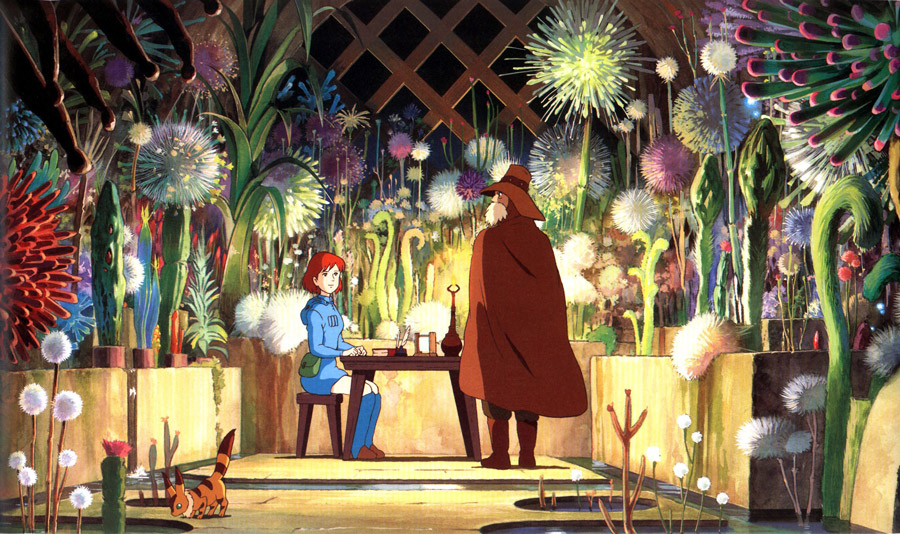
The Environmental Message
Studio Ghibli’s influence on environmental consciousness shines through Nausicaä’s narrative, exemplifying the synergy between humanity and nature. In her Garden Lab, Nausicaä nurtures spores with the care akin to her village’s plants, affirming that fostering flora with clean water and soil eradicates “miasma”.
This narrative, synonymous with Studio Ghibli’s ethos, impels action towards environmental preservation amidst degradation. Nausicaä, an emblem of hope, inspires through her commitment, echoing Miyazaki’s thematic resonance. This Studio Ghibli-inspired art encapsulates the profound connection between humanity and the environment, urging viewers to emulate Nausicaä’s stewardship. Furthermore, Studio Ghibli’s illustrious filmography and immerse in the transformative power of Miyazaki’s vision. Studio Ghibli’s environmental message endures, urging us to safeguard our planet, mirroring the timeless allure of Ghibli-style artistry.
My Neighbor Totoro (1988)
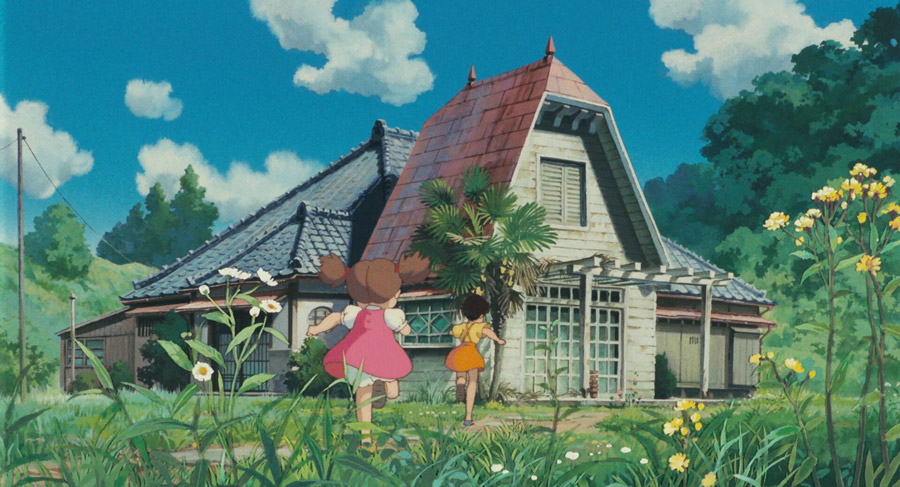
Immerse yourself in the enchanting world of Studio Ghibli-inspired art with the timeless classic, ‘My Neighbor Totoro’ (1988). Set amidst the picturesque landscapes of Tokorozawa City, Saitama Prefecture, this heartwarming tale follows Satsuki and Mei, daughters of a university professor, as they embark on whimsical adventures in their new home near a local hospital where their mother receives care. With its captivating Ghibli-style artistry and Miyazaki movie magic, ‘My Neighbor Totoro’ enchants audiences of all ages.
The wonders of Studio Ghibli’s environment art and the charm of this beloved film that has graced the Ghibli films list and studio Ghibli film list. Discover why Studio Ghibli films produced are cherished worldwide, and delve into the masterpieces created by the talented artists for Studio Ghibli. Join Satsuki and Mei on a journey filled with friendship, wonder, and the joy of discovery. Dive into the world of Studio Ghibli films and let your imagination soar
The Story
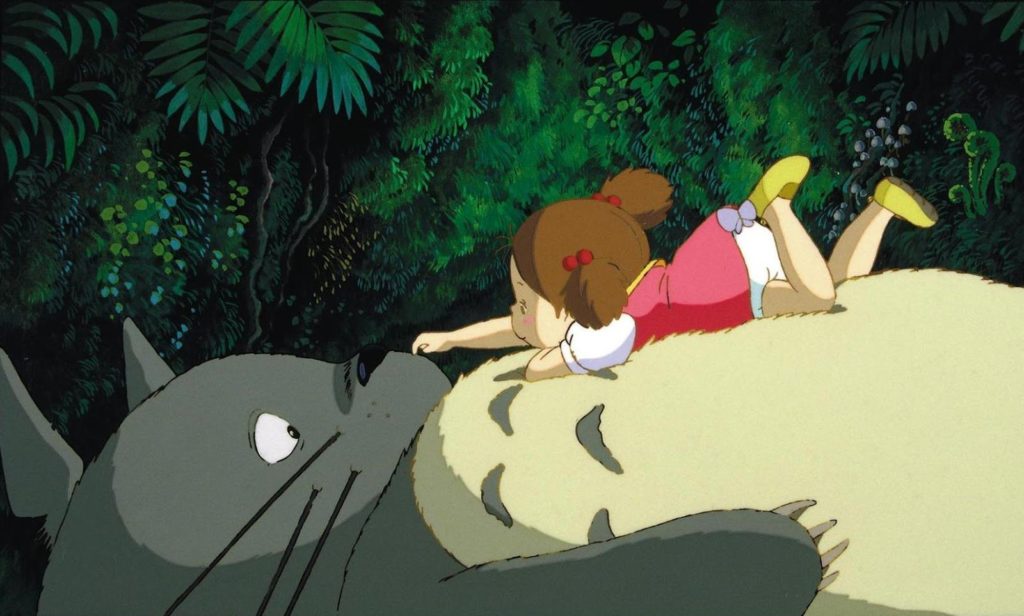
In the enchanting world of Studio Ghibli-inspired art, Satsuki and Mei encounter mischievous soot spirits, or Sootballs, within their home. These whimsical creatures multiply, emerging from the dust of abandoned places. Meanwhile, Mei’s curiosity leads her to a magical encounter with a miniature Totoro in the lush grasslands, prompting her to follow it into a mysterious forest. There, she discovers the gentle giant slumbering peacefully. This narrative, reminiscent of Miyazaki movies, captures the essence of Studio Ghibli’s enchanting environments and fantastical tales. Through captivating visuals and a blend of innocence and wonder, the story evokes the spirit of Studio Ghibli films.
The Environmental Message
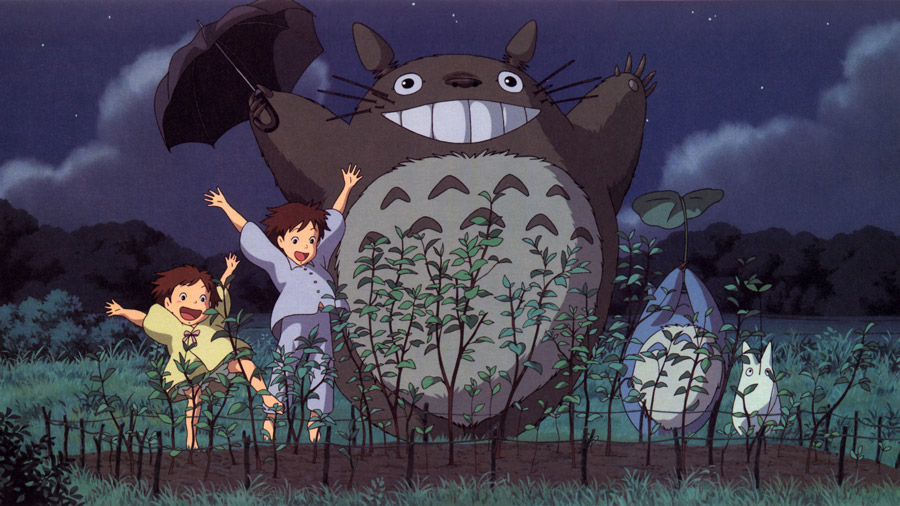
The world of Studio Ghibli through the iconic character Totoro, envisioned by the legendary artist Miyazaki. Totoro, a mesmerizing giant forest spirit in ghibli style art, embodies the essence of nature with a serene and emotionless demeanor. As a guardian of the forest in Miyazaki movies, Totoro inspires viewers, particularly young ones, to embrace the beauty of nature akin to the protagonists Mei and Satsuki.
Through My Neighbor Totoro, Miyazaki subtly imparts a profound message, encouraging children to become stewards of the environment, just like Totoro. This ghibli film list gem prompts reflection on our relationship with nature, advocating actions such as planting acorns, symbolizing our responsibility to preserve the ecosystem.
It’s a journey of imagination and environmental consciousness with Studio Ghibli-inspired art. Let Totoro’s whimsical adventures and Miyazaki’s visionary storytelling ignite your passion for nature preservation.
Princess Mononoke (1997)

In the untamed wilderness, Princess Mononoke—also known as San—was nurtured by wolves, shaping her worldview. Amidst Japan’s late Muromachi period, our narrative unfolds in Izumo, where ancient traditions clash with progress. Studio Ghibli’s inspired art captures Izumo’s ethereal beauty, bordered by an expansive oak forest, teeming with spirits and creatures. Whispering leaves tell tales of forgotten gods, while ancient trees silently witness time’s passage. Yet, the Tatara ironworks at the forest’s edge starkly contrast, symbolizing industrial ambition.
Hayao Miyazaki’s visionary storytelling melds environmentalism with mythos, portraying San as a bridge between worlds. In this enchanting tale, the clash between nature and industry leaves an indelible mark on San’s journey.
The Story
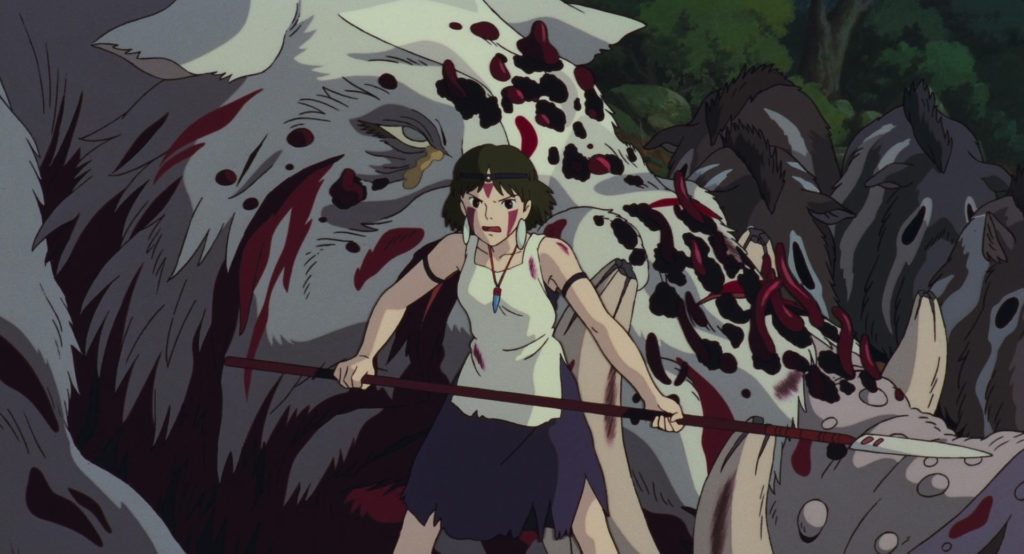
In a Studio Ghibli-inspired narrative, young prince Ashitaka faces banishment from his Emishi village after inadvertently cursing himself while defending his people from a demon, revealed to be a sacred guardian boar. His curse connects him to the forest gods, ensuring retribution upon those who harm its inhabitants. Venturing to Irontown, a human mining settlement, Ashitaka encounters Lady Eboshi, whose relentless pursuit of iron drives her to decimate the surrounding forest.
Amidst this conflict, Ashitaka crosses paths with San, a girl raised by wolves, determined to protect her home from human encroachment. Their unlikely alliance blossoms as they confront the clash between civilization and nature. This tale, reminiscent of Miyazaki movies, unfolds against a backdrop of lush Studio Ghibli environment art, capturing the essence of the studio’s iconic style. Experience the magic of Ghibli-inspired storytelling through this captivating journey.
The Environmental Message

Princess Mononoke promotes the message about the importance of the ecosystem, particularly the species that dwell in it. It urges people to avoid putting them in danger and instead to defend them. Princess Mononoke is basically a model character who is brave and passionate in her struggle against the inhabitants of Irontown who want to harm her home and family for the sake of their mining business.
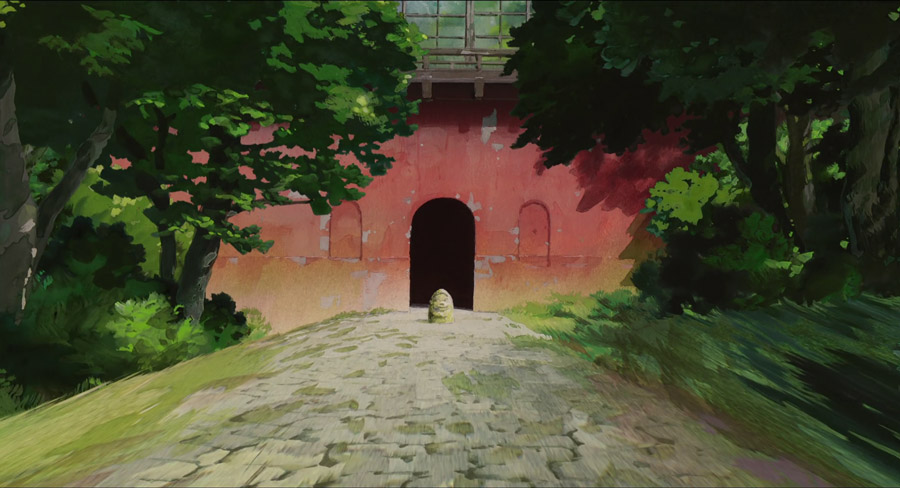
In “Spirited Away,” a red gate stands as the portal where a fantasy-like world unfolds, connecting the human world with the Spirit Realm, a place seldom visited by humans.
When one enters the Spirit Realm during the day, it looks abandoned but when the sun sets, the spirits that live there begin to emerge, undertaking their usual day-to-day activities, just as they would in the human world.
The Story

In the enchanting world of Spirited Away, a 10-year-old girl named Chihiro stumbles upon an abandoned amusement park. Little does she know that this seemingly ordinary place is anything but. When her parents are mysteriously transformed into pigs, Chihiro embarks on a surreal journey. Studio ghibli environment
She encounters the enigmatic Haku, who reveals that the park serves as a vacation spot for supernatural creatures seeking respite from their time on Earth. To free herself and her parents, Chihiro must work at the park. But it’s no ordinary workplace—it’s the Bathhouse of the Spirit Realm, owned by the formidable witch, Yubaba. Studio ghibli environment art
The bathhouse, designed in traditional Japanese style, becomes a sanctuary for spirits after dark. Here, they unwind, rejuvenate, and find solace. Imagine stepping into this otherworldly oasis, surrounded by lush greenery, soothing waters, and the gentle hum of magic. It’s the perfect place to unwind after a long day or embrace the mystical energy before dawn.
Studio Ghibli’s masterful storytelling, combined with Hayao Miyazaki’s reverence for nature, brings this captivating realm to life. Through Chihiro’s eyes, we discover that even in the fantastical, there’s a deep connection between humanity and the environment.
The Environmental Message

At first glance, ‘Spirited Away’ may not appear to convey an environmental message. However, a closer examination reveals Chihiro’s active role in cleansing a stink spirit, which symbolizes a river polluted by human neglect—typical of Studio Ghibli’s environmental art. This transformation from repulsiveness to purity serves as a poignant metaphor, echoing Miyazaki’s profound concern for our planet’s well-being.
In the realm of Studio Ghibli environment art and Miyazaki movies, this subtle yet powerful statement urges viewers to reflect on our environmental impact. By emphasizing awareness and action, it underscores the importance of preserving our world. For fans of Studio Ghibli-inspired art and Ghibli-style movies, this analysis sheds light on the depth of messages woven into the fabric of these beloved films. The rich tapestry of Ghibli films, a testament to the artistry of the studio and its commitment to environmental consciousness.
The Story of Yanagawa Horiwari (1987)

The Story of Yanagawa’s Canals is a part-animated documentary directed by Isao Takahata. Yasuyoshi Tokuma wanted to make another animated film and
Transitioning from Miyazaki’s initial search for a fresh idea, which centered around an animated film set in the picturesque town of Yanagawa, we find that during his visit, the town’s charming canals captured his imagination. Miyazaki believed that Takahata, who had previously produced “Nausicaä,” could breathe life into this vision.
Further fueling his fascination, Takahata embarked on a study trip to Yanagawa. There, he delved into the town’s history, uncovering the locals’ tireless efforts to preserve the ancient canals and restore once-polluted waterways. This journey culminated in a self-funded live-action documentary.
The founders of Studio Ghibli, drawing inspiration from Tsutae Hiromatsu, a former Yanagawa Municipal Office employee, were deeply influenced by Hiromatsu’s dedication to safeguarding Yanagawa Horiwari. His commitment left an indelible mark on both Miyazaki and Takahata.
The Environmental Message
The Story of Yanagawa Horiwari” (1987), which captures the essence of Studio Ghibli’s environmental message, the mesmerizing Ghibli-style art, reminiscent of Miyazaki movies, serves as a powerful conduit. Set against the backdrop of lush landscapes and serene waters, the film gently invites viewers to contemplate the delicate balance between humanity and nature. Throughout the protagonist’s journey, the narrative subtly underscores the importance of coexistence and harmony with the environment. Moreover, Studio Ghibli-inspired art breathes life into every frame, inviting audiences to immerse themselves in the beauty of the natural world.
As one of the lesser-known works in the Studio Ghibli film list, “The Story of Yanagawa Horiwari” exemplifies the studio’s unwavering commitment to showcasing the intrinsic connection between humanity and the environment. With its poignant storytelling and stunning visuals, this hidden gem stands as a testament to the enduring legacy of Ghibli films produced over the years. Therefore, delve into this enchanting tale and rediscover the magic of Studio Ghibli environment art and Miyazaki movies.
Happy Reading! furthermore, if you like this article, you can also read 10 Studio Ghibli Locations You Can Actually Visit!


















































